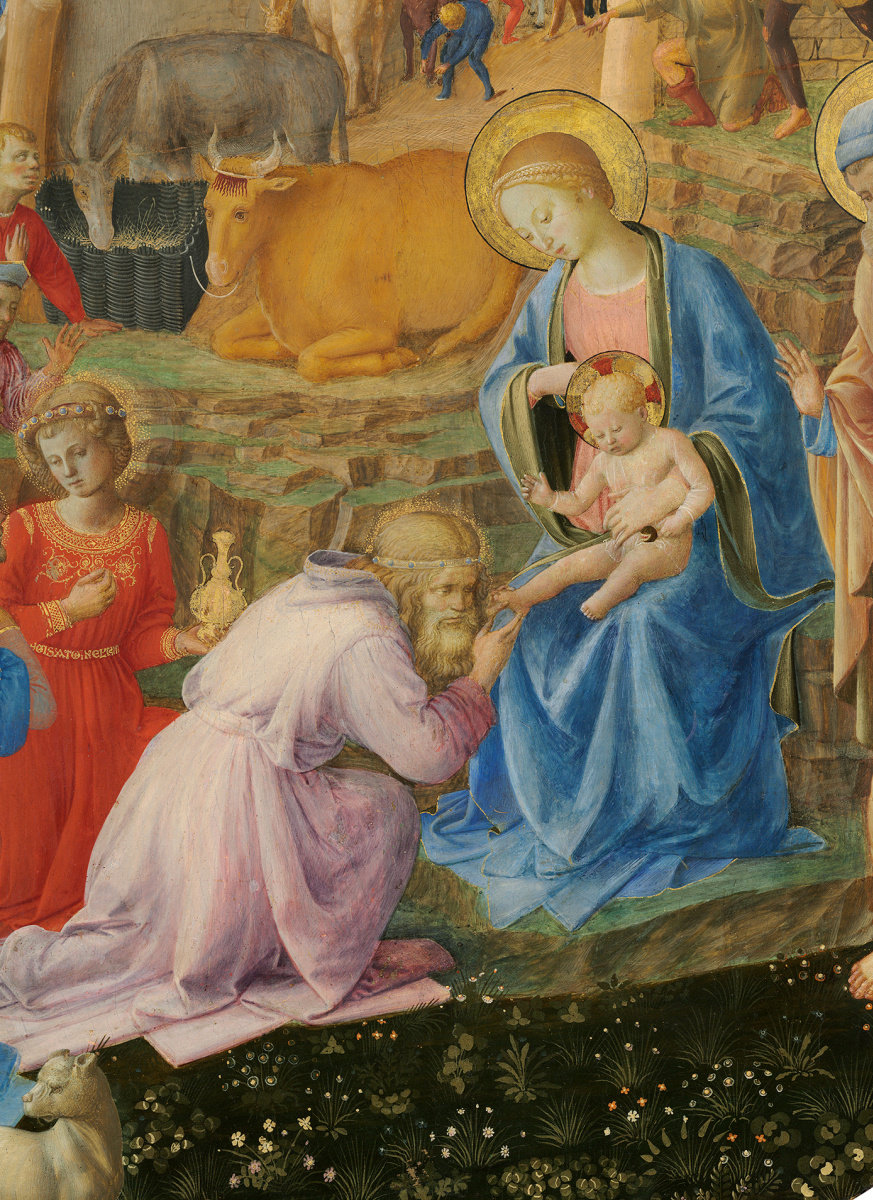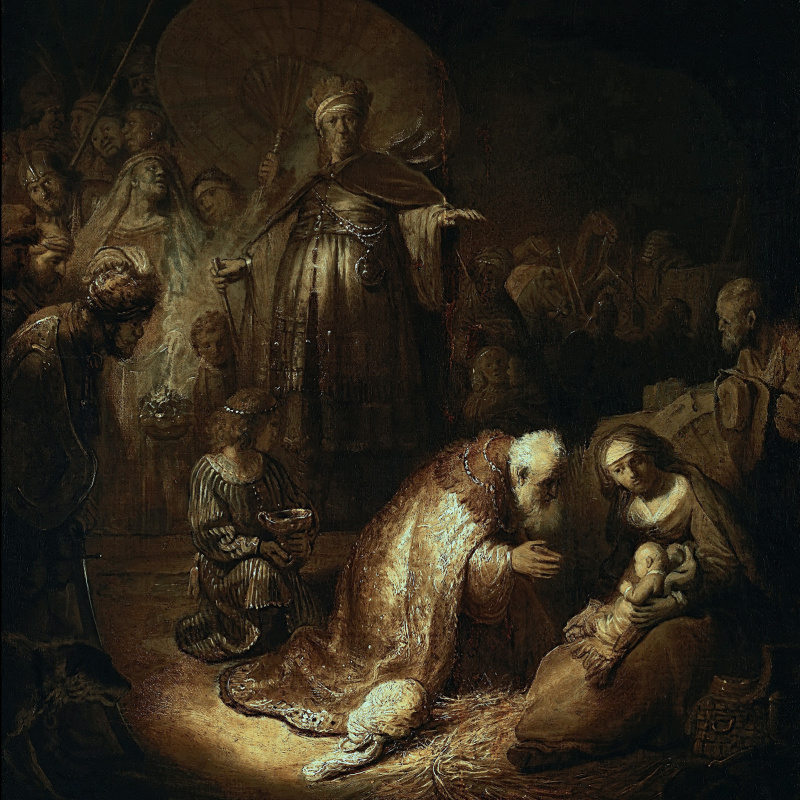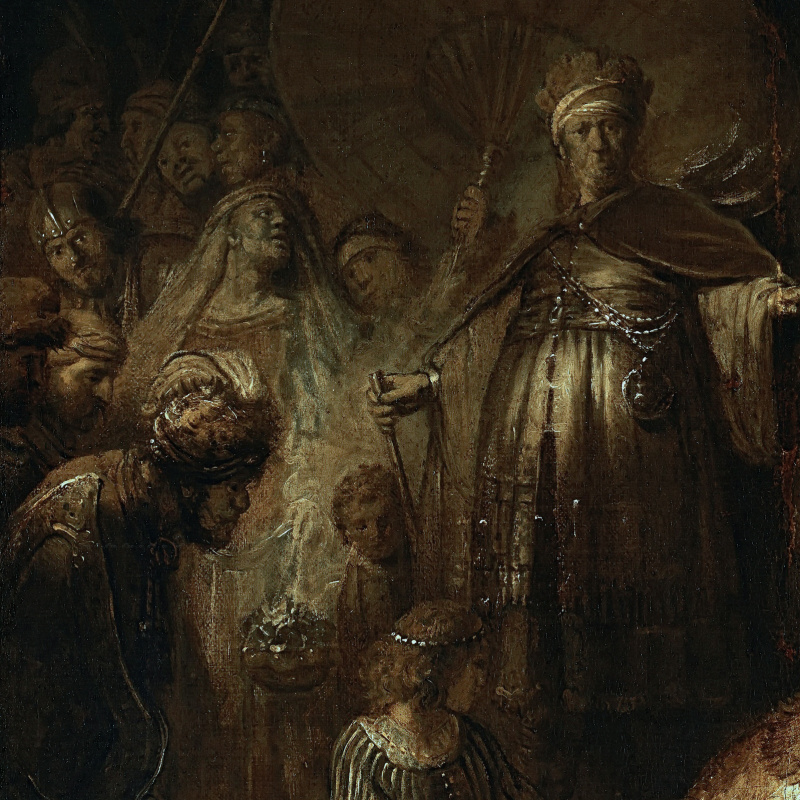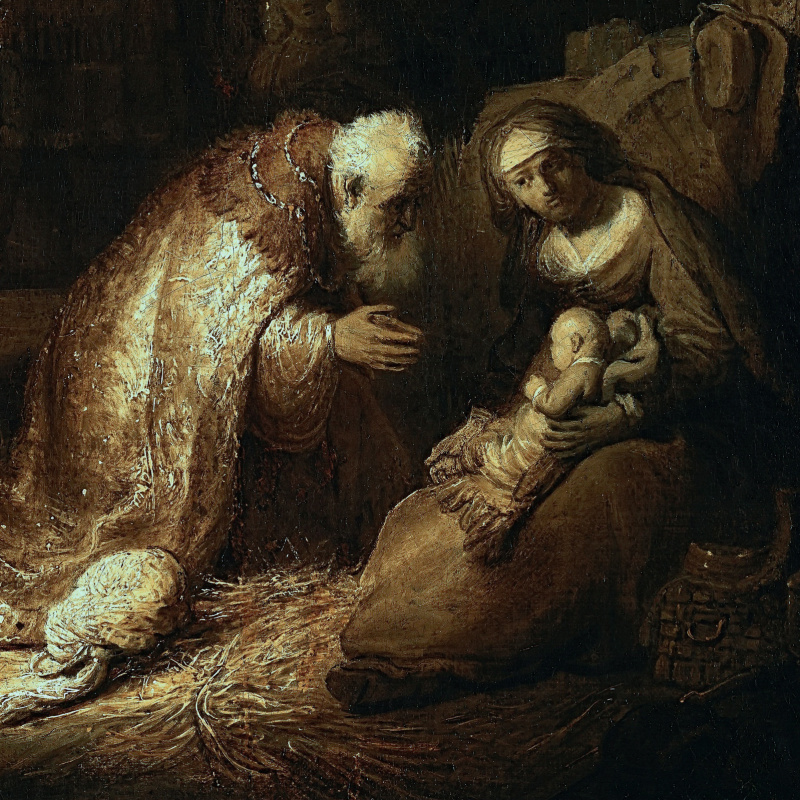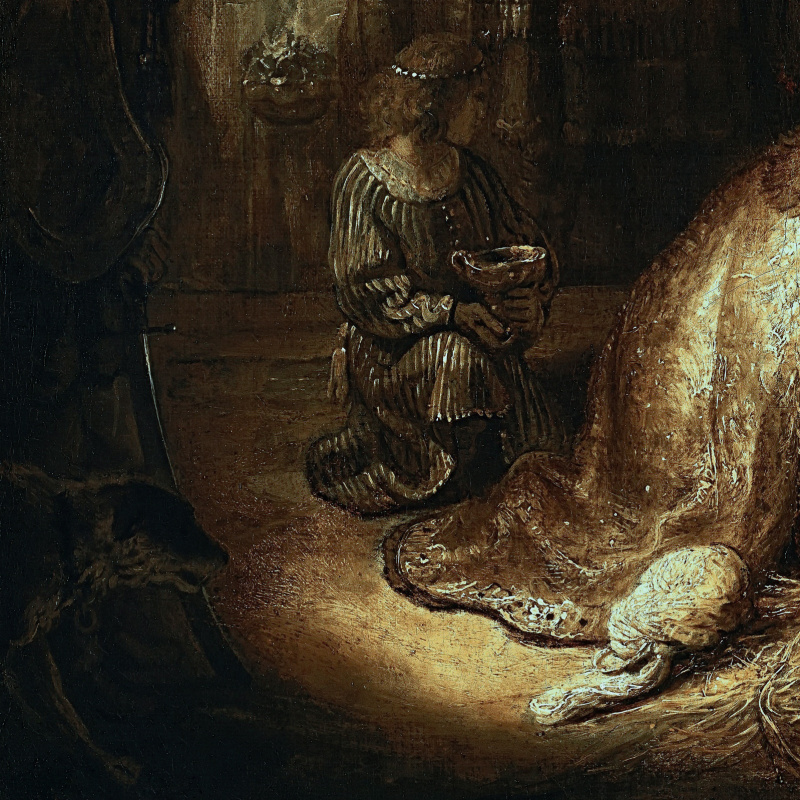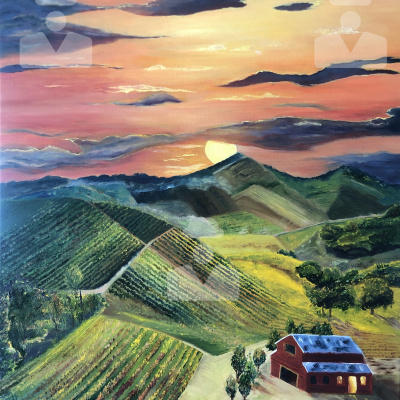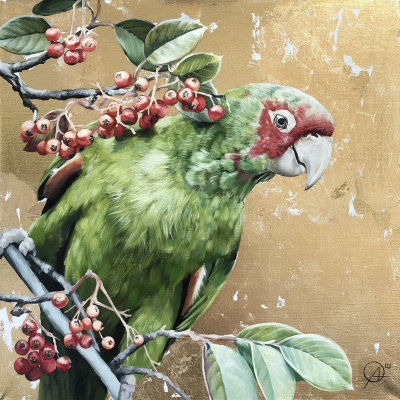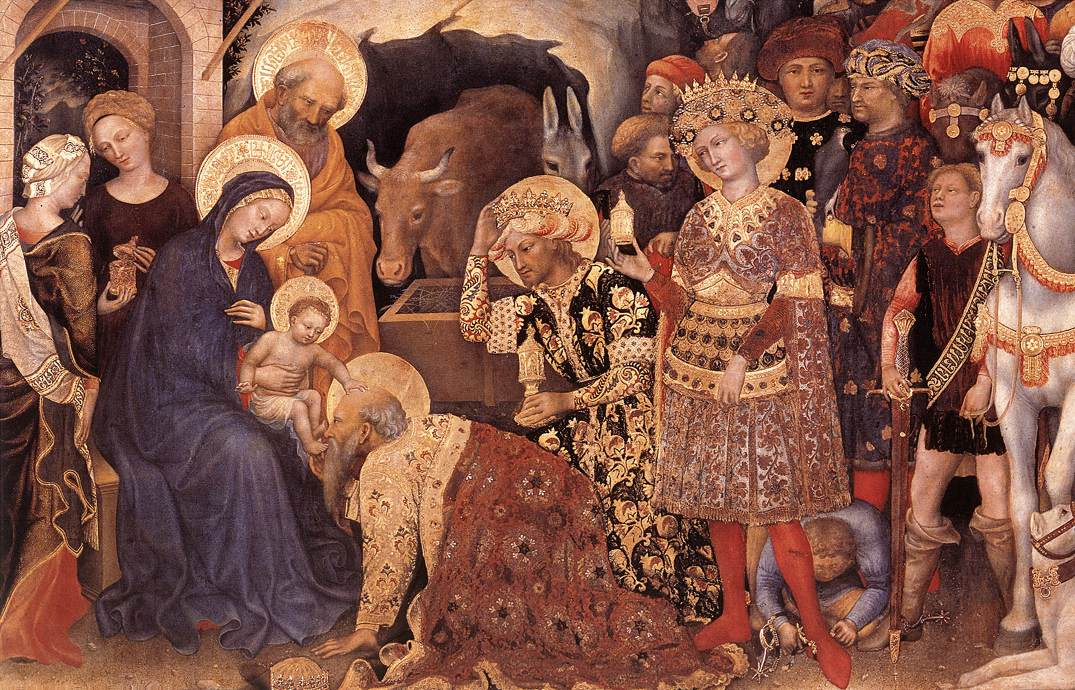
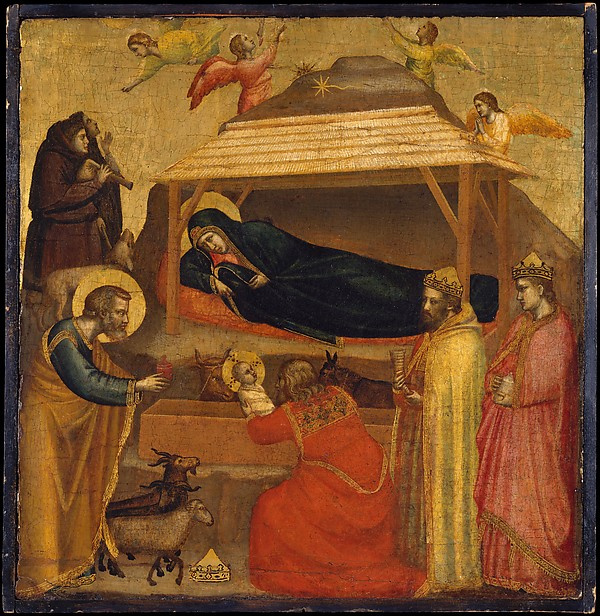
Giotto
The masterly depiction of the stable, the carefully articulated space, and the columnar solidity of the figures here testify to Giotto’s reputation as the founder of European painting. The impetuous action of the kneeling king, who picks up the Christ Child, and Mary’s expression of concern translate the Biblical account into deeply human terms.
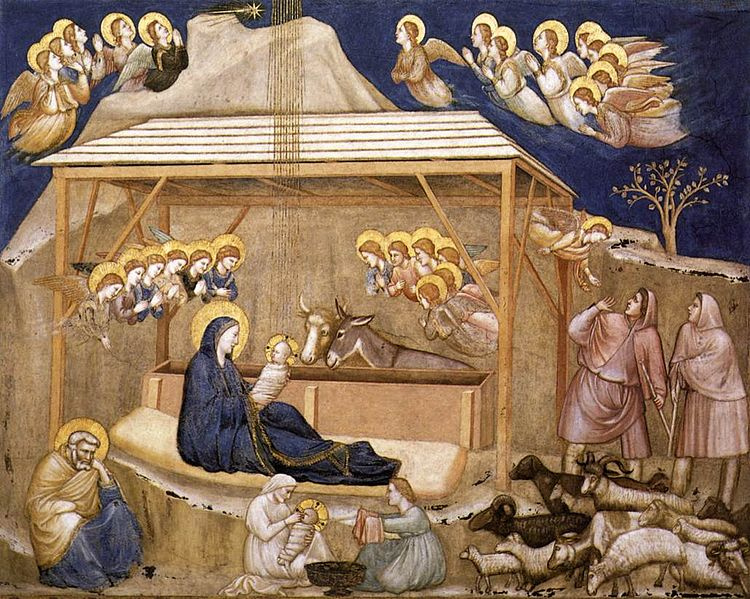
Lower Church, San Francesco, Assisi
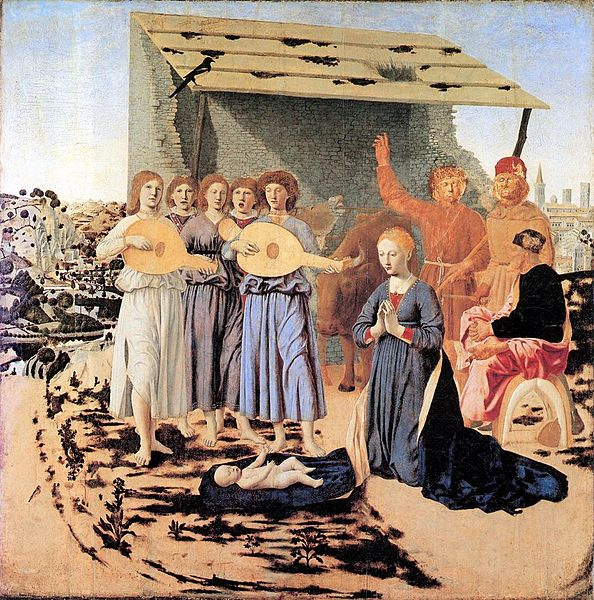
Nativity
Piero della Francesca
1470−75. Fresco
Each person, angel and animal shows a different attitude of reverence towards the infant Christ. Even the magpie, well-known in Piero’s native Tuscany for its constant chatter, seems changed and looks to be struck silent.
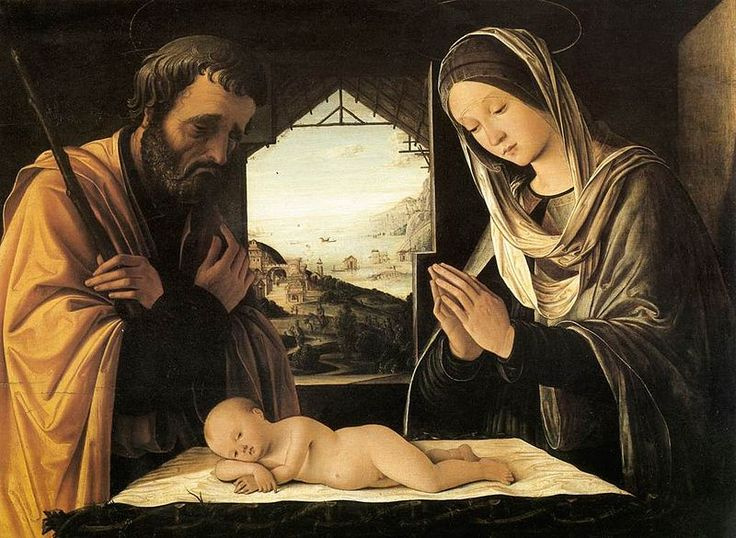
The Madonna has the facial delicacy which was a feature of Costa’s paintings. Note the pose of the Infant Jesus; he is usually shown lying on his back looking upwards at his mother. Discarding this formula, Costa has a drowsy Infant looking outwards, towards the viewer. What a relaxed little baby! Joseph looks glum — or is it merely his drooping moustache that makes him seem so?

Nativity
Albrecht Durer
1504. Engraving
Staatliche Museen, Berlin
These artistic treasures must have been strangely out of place in the humble home at Nazareth where Jesus worked as a carpenter until he had attained the age of thirty years.
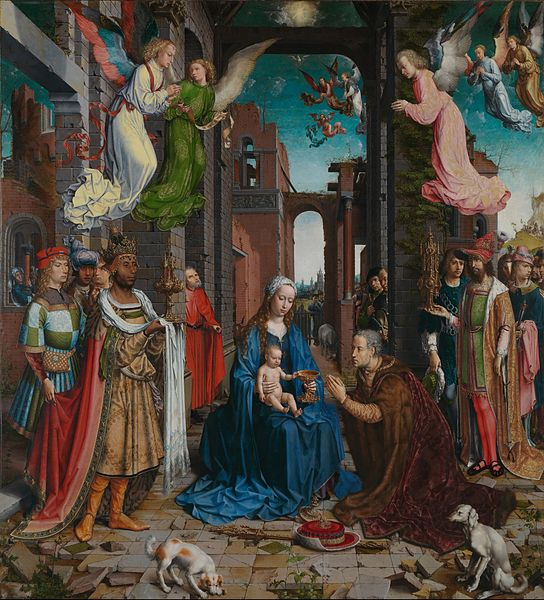
Jan Gossaert, 'Adoration of the Magi', 1510−15, National Gallery London
The best of the early Renaissance painters concentrated on exquisite decoration; they were not interested in graphic portrayal of real life.
There are many figures and components in Mabuse’s 'Adoration of the Kings', but each one is necessary to the whole. The artist obviously worked it out in great detail before he began to paint — indeed, the actual application of paint was only a last step in the process.
Every figure and object emphasises the IMPORTANCE of the Madonna and the Infant Jesus — they have become the center of the universe. But the real world is there too, in the presence of two small (but aristocratic) dogs.
Rembrandt van Rijn
1632. Paper on canvas. St. Petersburg, Hermitage
sucking his thumb!
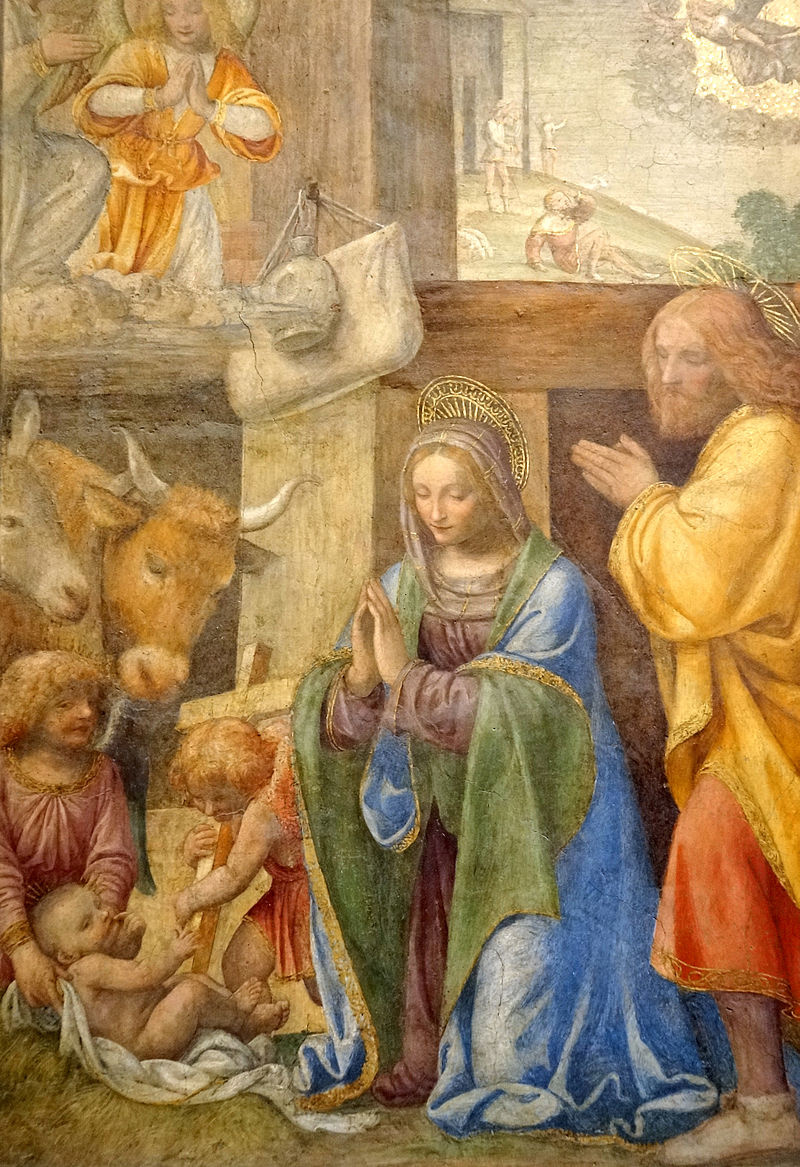
Bernardino Luini
Ca.1520−25. Fresco on canvas
Luini was the most eminent of the pupils of the illustrious Leonardo da Vinci. His style strongly resembled that of his master, and Luini has left us a far greater number of finished pictures than Leonardo did. In Luini’s picture, as in many others on this subject, the background shows us the annunciation of the angel to the shepherds. It never troubled these naive old masters to represent in the same picture two events occurring at different times.
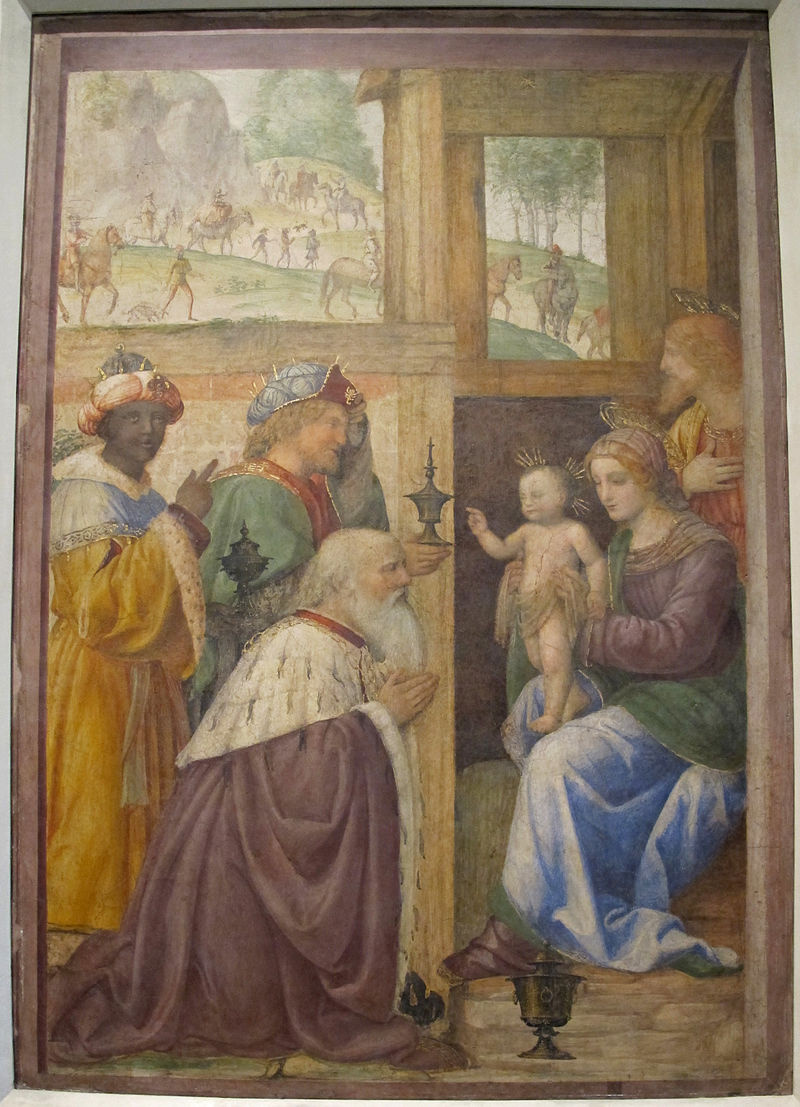
Bernardino Luini
Ca.1520−25. Fresco on canvas
Нere we find that Luini has made the perilous experiment of bisecting his composition from TOP to bottom by a great pillar of wood, and yet the picture is a noble one. The scene which we see in the distance must represent the retinues of the three kings who are already in the presence of the infant Christ. Luini, likemany others of the old artists, depicts the infant as a child of about two years of age.
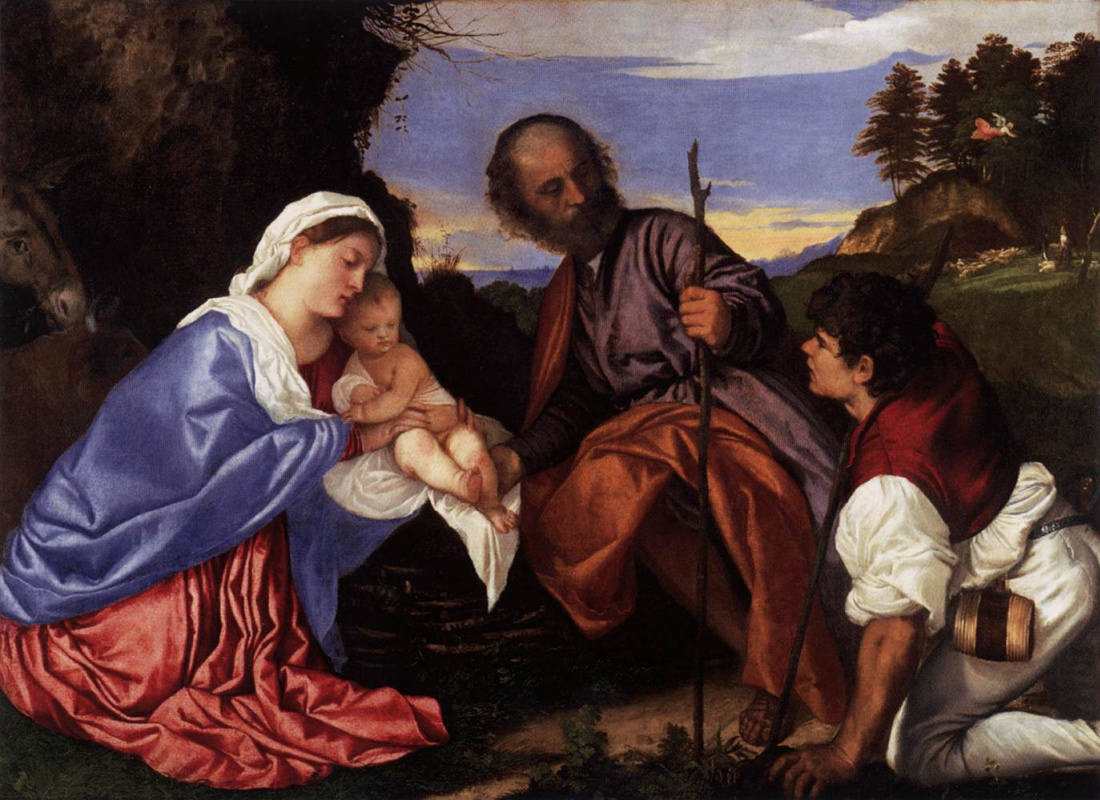
Ca. 1510, Titian
The National Gallery, London
If ever an artist possessed the "grand style" Titian certainly had it. In all the pictures produced during his long and active life, there is not one which betrays the slightest feebleness or pettiness. In this picture the Madonna and the Child are noble, Saint Joseph is conspicuously noble, and even the scrubby kneeling shepherd youth has a nobility of his own.
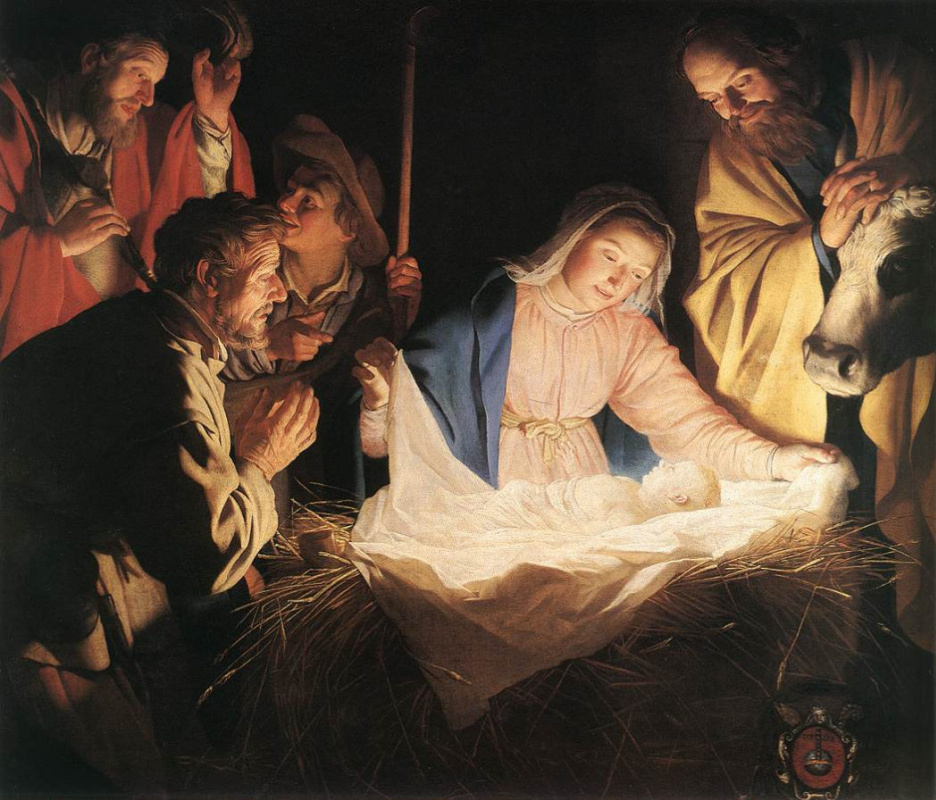
Gerard (Gerrit) van Honthorst 1590 — 1656
1622. Oil on canvas
Wallraf-Richartz Museum, Cologne
This famous picture is lighted not from the sky, nor from torches or lamps but from a mysterious light which emanates from the body of the Holy Child. The cleverness of the picture is undeniable; but yet it approaches the later period when art, pure and simple, began to be supplanted by artifice.
Based on Christmas in art: the nativity as depicted by artists of the fifteenth and sixteenth centuries
by F. Keppel, 1909.






